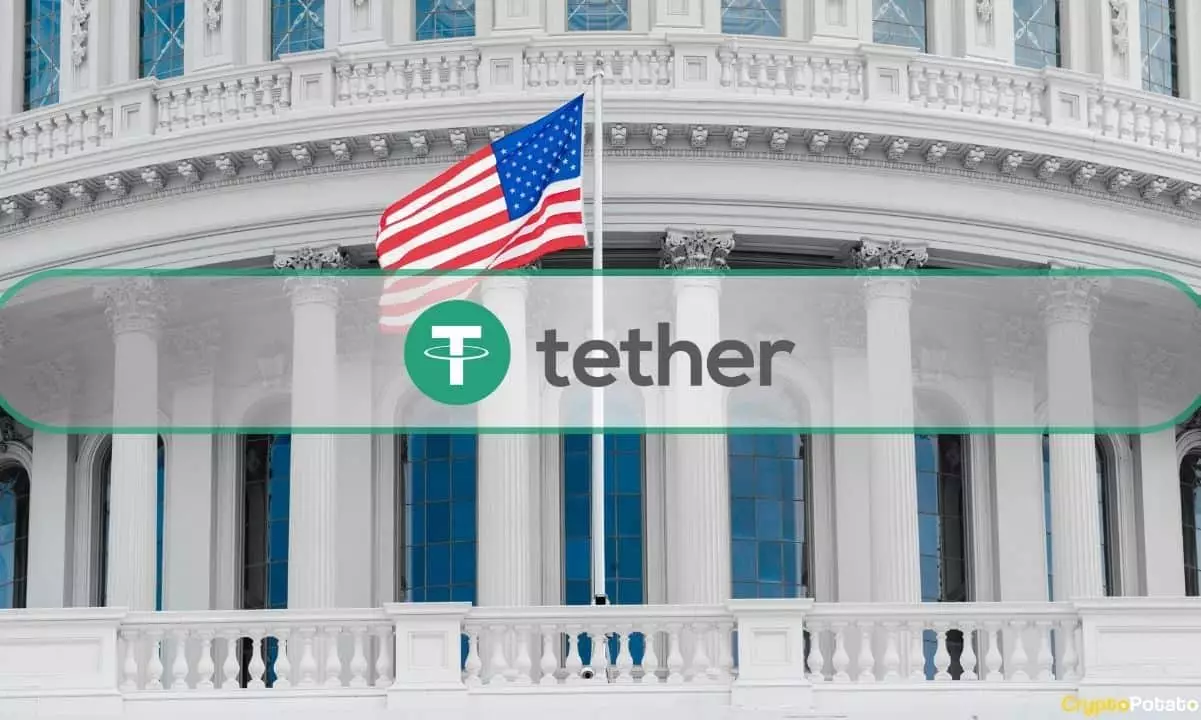In recent discussions among crypto industry experts, Tether has emerged as a potential frontrunner to become the world’s dollar-pegged defacto central bank digital currency. This speculation was sparked by the endorsement of Cantor Fitzgerald CEO, Howard Lutnick. Lutnick publicly voiced his admiration for Tether, stating, “I’m a big fan of this stablecoin called Tether…I hold their treasuries. So I keep their treasuries, and they have a lot of treasuries. They’re over $90 billion now, so I’m a big fan of Tether.”
The significance of Lutnick’s endorsement cannot be underestimated. Cantor Fitzgerald, a global investment bank, brokerage, and financial services firm, holds significant influence in the financial industry. If the CEO himself expresses confidence in Tether’s stability, it could potentially sway other investors and institutions to consider it as a reliable digital currency.
Interestingly, Glassnode on-chain analyst “Checkmate” boldly declared, “Tether is the CBDC.” This assertion raises eyebrows, especially when considering the US government’s ability to shut down Russia’s reserves. If they can do that, it stands to reason that they are capable of taking action against Tether as well. “Most probable reality is the USG just found an infinite bid for treasuries, exactly when they need a bailout from an unsustainable fiscal situation,” Checkmate further added.
Moreover, Checkmate argues that the developing world is progressively adopting the dollarization trend as their own fiat currencies continue to collapse. In this context, Tether offers a more stable alternative to local currencies such as pesos, bolivars, and lira. Checkmate goes on to emphasize the role of emerging markets in funding US retirements, healthcare, military escapades, and government largesse. Therefore, Tether’s rise could prove mutually beneficial for both parties involved.
Delving deeper into the comparison between Tether and central bank digital currencies (CBDCs), Bitcoin ESG evangelist David Batten highlights several noteworthy distinctions. He points out that Tether has invested millions into green Bitcoin mining, initiated Bitcoin education programs within universities, and even partnered with a Bitcoin city (Lugano). This sets Tether apart from CBDCs, which do not exhibit the same level of involvement in the crypto ecosystem.
Moreover, Batten acknowledges the crucial dependence of Tether on US regulators. Although Tether enjoys a favorable stance from the US government currently, any change in their perspective could lead to Tether’s demise. This vulnerability underscores the regulatory risks associated with Tether, as it is completely beholden to the decisions of US regulators.
Tether’s Global Dominance
Tether’s ascendancy has become particularly apparent as it surpasses other stablecoins, such as Circle’s USDC, in market share and trading volumes. General Partner at Dragonfly, Rob Hadick, commented on this significant divergence, stating, “Traders outside of the regulated US/UK firms and increasingly retail in emerging markets are actually using USDT as a mechanism to transact.”
With a record-breaking market cap of $90 billion, Tether now commands around 70% of the stablecoin market share, leaving Circle’s USDC with a diminished share of just 18%. This remarkable shift in dominance signifies the growing acceptance and preference for Tether as the stablecoin of choice in the global market.
The Outlook for Tether
While Tether continues to face scrutiny and regulatory challenges, its market dominance and endorsements from influential figures like Howard Lutnick demonstrate its resilience and potential. As the world navigates an ever-changing financial landscape, Tether’s ability to provide stability and a reliable digital currency alternative could make it a significant player in the future of global finance.
It is worth noting, however, that Tether’s success is not without risks. Its dependence on US regulators and the potential for regulatory intervention could pose threats to its future existence. Additionally, concerns regarding the transparency of Tether’s reserves and its operational practices persist in the crypto community.
The rise of Tether as a potential defacto central bank digital currency has sparked discussions and debates within the crypto industry. While it continues to face skepticism and regulatory challenges, Tether’s significant market dominance and endorsements from influential individuals indicate its potential to reshape the global financial landscape. As the world grapples with economic uncertainties and the need for stable digital currencies, Tether’s future remains intriguing yet uncertain.

